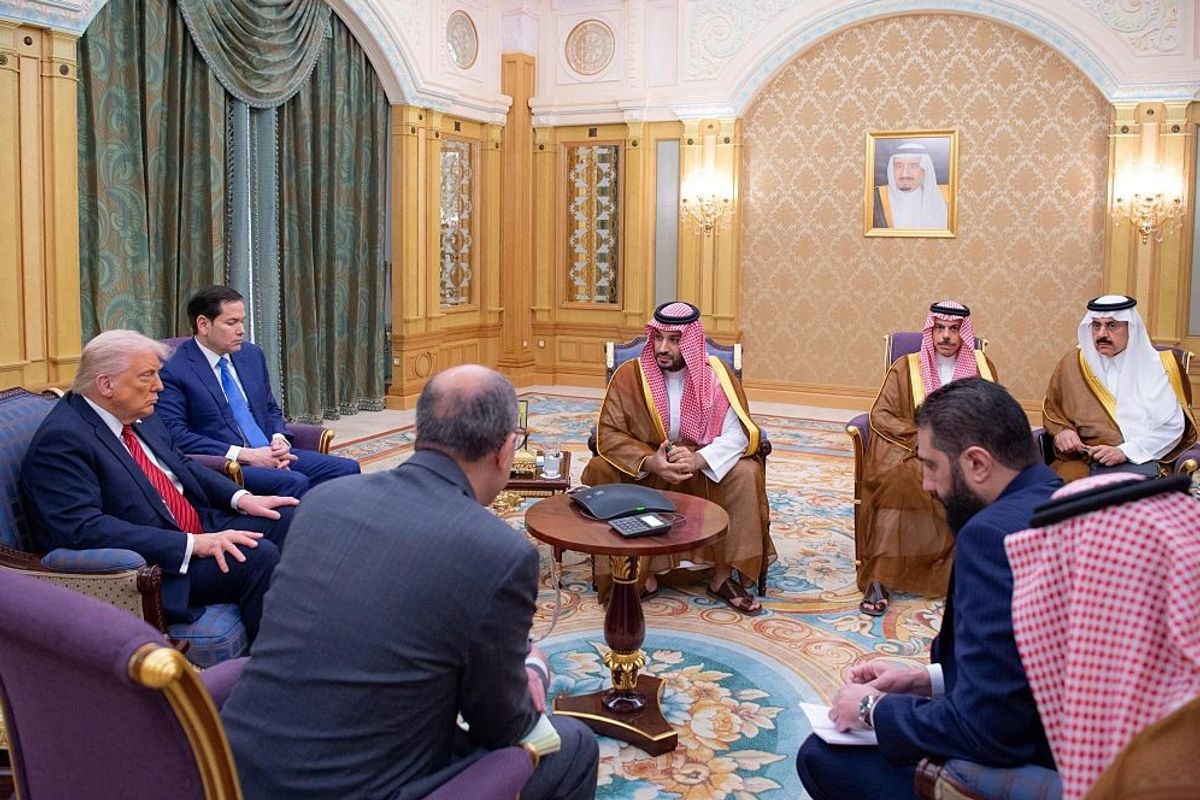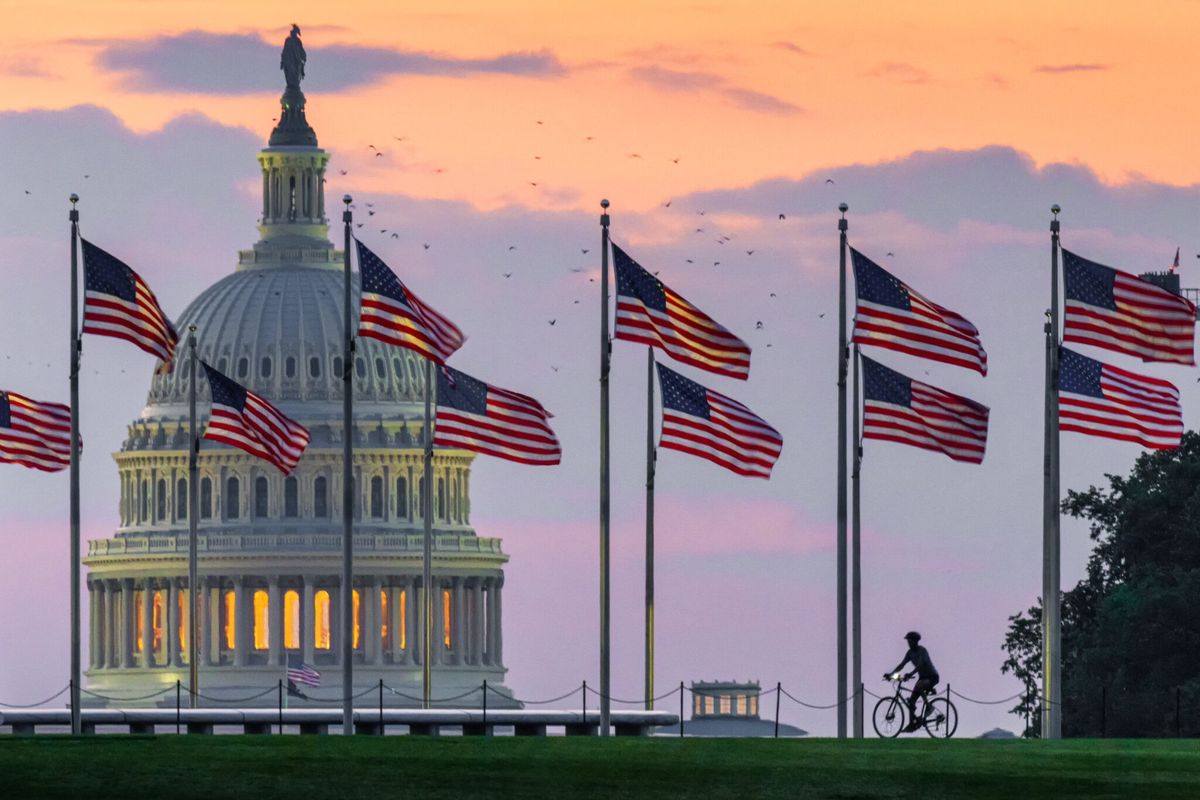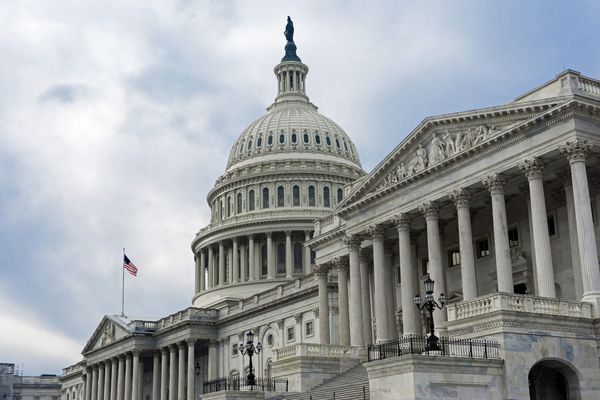How far-fetched are James Bond’s gadgets or shows like Mission Impossible, where under-cover agents switch into different disguises? Not as far-fetched as you think. The CIA’s Office of Technical Service (OTS) is in charge of creating all those gadgets and disguises. Jonna Mendez, who spent 27 years at the CIA, eventually became the Chief of Disguise at the OTS.
She spoke to The Cipher Brief's Executive Producer Leone Lakhani about how she rose up the Agency’s ranks from a secretarial job, and how she learned from Hollywood makeup artists and magicians, to master the art of illusion and disguise.
The Cipher Brief: Describe your journey.
Jonna Mendez: It’s an unlikely journey. I came out of Wichita, Kansas wanting desperately to get out of Wichita, Kansas. I went to Europe to be at my best friend’s wedding in Germany. And there, I was not in Kansas anymore clicking my heels.
So, I went to Frankfurt. I got a phone book. I was looking for American firms. I called American Express, Bank of America, and Chase Manhattan Bank. They said, “Do you have a work permit for Germany." I said “No.” They said, “Do you speak German?” I said “No.” They said, “Have you ever worked in a bank before?” I said “No.” They said, “Well, why don’t you come in and talk to us?” And they hired me, which was one of the first odd moments in my life.
They quickly found out I couldn’t do any accounting, so they gave me the job working for the president of the bank, doing his English correspondence. And these Americans started coming into that bank every two weeks. I thought they were military, but they weren’t. They were CIA. I started dating one of them, and a year-and-a-half later, I married him in Switzerland. Then we went to Bangkok, and I needed a job. So, I got a job working with the [CIA] local office.
TCB: You started as a secretary, like many women at that time. You then took a photography course and became a photo operations officer.
JM: It was like a pick-up job while we were overseas. I came back, and my husband went to university. So, I worked and helped put him through school. I discovered I was a really good secretary. But in two years, I was working for the director of this office, and there was nowhere to go.
I could see the Smithsonian from my office, and I told my boss, “I bet there is a job over there that I would like.” He said, “Well, I know you are an amateur photographer, and we give a lot of photo lessons here in this office. Why don’t you take some of our photo lessons?”
This “office” was “Office of Technical Service.” It was like the “Q” in James Bond.
The first day of the photography class, I walked out on a tarmac, and there was this itty-bitty plane, a twin-engine plane, with the doors off and a harness hanging in the back, for me. We flew around for a day photographing radars, photographing microwave towers.
Then that night, I went into the darkroom, and I was developing a print of the film. And that night I said, “This is the beginning of my career at the CIA.”
TCB: Your specialties were disguise, false documentation, and clandestine photography. What exactly does a photo operations officer do?
JM: We do with cameras what everybody at the CIA does, and that is collect information. There is a thousand ways to collect it, but you know what they say, “a photo is worth a thousand words.” The question is how to collect that. You can’t walk around with a camera. So, we developed very, very, very small cameras. That was my specialty at the beginning, those cameras. I had cameras in lipsticks. I had them in key fobs. I’d put a camera in just about anything, and the information was collected with those cameras.
TCB: You were the real life “Q,” as you mentioned. Any other gadgets that you developed, that you thought were really cool and useful?
JM: Our office was inventing technology when I was there. Today, we are buying technology off the shelves. When we were doing what we were doing, we were miniaturizing batteries. The batteries you see today in hearing aids came out of CIA technology and the need for these tiny, tiny batteries that we could put an audio device into a conference room.
TCB: If you are buying technology, everybody has access to the same technology. How do you stay ahead of your adversaries then?
JM: You start now with the best commercial technology. The cell phones that we all use contain probably 10 of the basic technologies that we were developing back then. It can be encrypted. It can be clandestine. It can take photographs. We can buy that. That is the new starting place. So now, what can you do with that to make it even more innovative, more useful?
TCB: You must have had so many fascinating operations, and I know many of them are classified. But is there one, in particular, that gave you a real sense of accomplishment?
JM: It’s a little murky how much we can say about it, but it [disguises] enabled our officers to instantly change the way they looked. People asked, “did you use masks?” Well, of course we used masks.
The very first one that was made for me turned me into an African-American man. I ended up showing it to the head of CIA, Judge William Webster. He said, “Well, we have to take this to the White House.” I said, “It looks good, but I can’t walk it or talk it.”
He said, “Make another one.” So, we made another one, and I became about 15 years younger, much prettier, with a fabulous hairdo. Of course, it just fit me.
We took it to the White House. I met President George H. W. Bush and briefed him in it. Then I took it off in the Oval Office, and there was a group in there. There was [White House Chief of Staff] John Sununu and [National Security Advisor] Brent Scowcroft. Judge Webster was there.
TCB: It was quick, right? You could take it off quickly, Mission Impossible style?
JM: It just comes off, and there's no residue. John Sununu was taking notes, and he was shocked. He was startled.
I've seen President Bush numerous times since then. Initially, he didn't remember my name, but he remembered my face. He'd look at me, and he'd point his finger at me and say, "aww I remember you!"
TCB: You always tested those disguises before you could use them?
JM: Oh yes. You don't meet many men who want to put on a wig. When we would do an extensive disguise for someone for an operation, the first thing we would do is send them out of the CIA building. We'd say, "Go to 7-eleven.” So, you could get out and interact and discover that people don't pay any attention. People don't look at you. People don't care.
The next time, we would send them down to the Agency cafeteria. They'd sit two tables down from their boss and the people they work with. Then, you had a good chance that they would use it.
TCB: Creating illusions is not just about disguise. It's also about cultural characteristics and the way people behave. What kind of clues did you look for? How you could teach your officers to pick up certain characteristics?
JM: It was more about teaching our officers to blend in, so they would pick up the characteristics of the place they were operating in and wouldn't look like the American in the crowd. There were lots of ways to do it.
You could make them look like another nationality in the crowd. We started out saying, "Buy your clothes there. Everything you wear, your shoes, everything you have on, [you need to] buy it locally.” You had to talk about things like, where's your wedding ring? How do you smoke? What do you smoke? What are you reading? You had to register every piece of you.
TCB: You gave me examples of how Americans stand in an elevator or go to the movies, for instance.
JM: It's American posture. We don't have good posture. We also don't have good public manners. An American standing next to this (taps table) is going to hold on to it. He's going to get on one leg. He's going to stick his hip out.
If he is in an elevator, his back will be up against the rail. Europeans are standing upright. That's what their mothers and fathers told them was the proper thing to do, and they still – even the younger ones – do it.
TCB: When you look at Hollywood makeup artists – who create those great masks – they have hours to do it. They've got lighting. They've got cameras. But you had to do things quickly for officers in the field. How did you develop those techniques and that craft, and how did it change?
JM: Hollywood was very much part of the beginning of those programs. How do you make a mask? How do you make a prosthetic nose? How do you make a dental facade to change someone's teeth? They showed us how they do it.
Of course, their working parameters were quite different. Ours had to go on now. It had to go on without mirrors and lights. When it had to come off, it had to come off. It had to collapse where you could conceal it. It had to be right. There were no second takes. We spent a lot of time taking their techniques and turning them into our techniques.
TCB: Any technique that you're proud of developing?
JM: The idea of working with magicians in Hollywood and taking that on board as a tool of espionage was a really interesting idea. Think about how your mind works when you're watching a magician, when someone disappears on a stage. We would say to each other, "We wish we could do that. how do they do that?" We went to LA and went behind the scenes to see how [magicians] did that.
What are the tools they use to consistently and successfully deceive you? We used the concept of how do you get someone to put disbelief aside and accept what they're seeing in our street operations.
In magic, very often there are twins, or there are two people who look amazingly alike. We thought, that's interesting because one of our goals was to make another you. We wanted to turn the concept that you can't be in two places at the same time on its head.
What does that buy you? It buys you a lot. If [an officer's] assignment is to stay with you through an evening, how nice it would be if they thought they were with you through an evening. If you could get away from them, and maybe at the end of the evening, get back. They never would know you were gone. What a powerful tool that was. We did a lot of that.
TCB: You talk about Hollywood, and how it helped you hone your craft. People look at movies and say, "oh that's really far-fetched or James Bond is really far-fetched," but there are many instances where life imitated art. Facial recognition, cell phones, for example, came from movies, right?
JM: Facial recognition in the CIA came about when Bill Casey – the head of CIA at the time – saw a James Bond movie. I believe it was Gold Finger. He called Tony Mendez, my husband, who was running Disguise, and said, "can we do this, this facial recognition thing?" Tony said we cannot. Then Casey said, "shouldn't we be able to?" Tony thought we should. So, Bill Casey commissioned it right then and right there. That was the beginning of facial recognition in the Intelligence Community.
TCB: I wanted to ask you about your personal journey. You describe in the book Spy Dust about how you progressed. You say that they were many technical field units around the world, but you were the only woman field operative at the time.
JM: When I started, there were very few women. They were all secretaries.
TCB: What were some of the challenges you faced, if any? In such a specialized field, has that progressed?
JM: Initially, I went down to HR and talked to them, as a secretary, and asked them what's the possibility of advancement in that area. They said, "If you're not a physicist, a chemist, you know, you're not going to go anywhere in this office. This is the wrong office."
But it wasn't; it was the right office. As a woman, what I did was forget that I was a woman. Probably, a lot of women wouldn't exactly do that today. I loved the work, and I worked harder than the guys.
When I was working in the photo labs, developing all the film, the men discovered that they could give me that film and I never lost a roll of, ever. It just grew from that. They discovered that "ah well, she can do that, she can do that, and she can do that."
But I was in the dark rooms, and I wanted out of the dark rooms. I wanted to be the one on the street, meeting with some of these people, and training them in hotel rooms, and showing them how to be safe. The men said "No they would never listen to a woman. They won't hear this from a woman, especially people from the Middle East."
Yes, they would. They didn't care who you were as long as you could say, "If you do this, and you do that, the odds are that no one will ever understand what's going on."
TCB: And that obviously opened doors for many other women, doing the same kind of thing?
JM: More and more women started coming in. When I left the CIA, which was some years ago, the women were very nicely enconsced on the 7th floor in upper level management. Women are good managers, and they recognize that. Where they were not doing well was on the ground, overseas, on the street recruiting and running assets. But there was no reason women couldn't do that. Women are doing that work and doing it well.
TCB: Any other memories that really stick out when you look back at your career?
JM: I think that I was incredibly lucky to have a career that I had. I was good at what I did, but I don't think that's enough. I think I was very often in the right place at the right time. I left when I was 48. I could have stayed longer. Part of me wonders what would have happened had I stayed longer, but they were downsizing the government, and I thought I had done enough there. I'm going to see what I can do somewhere else.
TCB: In hindsight, was there any operation or event where you thought, oh, I wish I was part of that?
JM: All the time. (laughs)
TCB: Any you want to mention?
JM: No. Part of working [at the CIA] was reading the paper, and there was this funny little secret feeling of power, like you knew a little more than the rest. Now, I don't have that. I read the paper, and all I can do now is wonder if that's right. And I do, I wonder all the time.
For more on our interview with Jonna Mendez, listen to our full 15 Minutes podcast here on iTunes or on our website.













